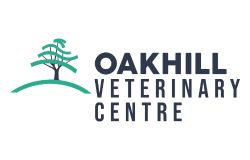Magnetic Resonance Imaging (MRI) is an advanced imaging tool that is widely used in the veterinary and human healthcare fields. MRI has been developed for use on our equine patients and has been found to be invaluable in helping us to attain specific, accurate diagnoses for our patients. Did you know? Using MRI early on in a lameness case can actually reduce your overall spend by achieving a prompt diagnosis and treatment plan without trying numerous other approaches which are unlikely to help in the absence of a specific diagnosis.
At Oakhill, we have a standing low-field MRI scanner which means that horses are sedated and stood up for the whole procedure, no general anaesthetic is required, YIPPEEE! The use of the standing MRI scanner is now considered the optimum tool for diagnosing orthopaedic conditions in the horse. The MRI machine is a low field scanner and the strength of the magnet is 0.27Tesla, to put this in comparison to a high field scanner used in hospitals which is 1.5Tesla in strength. This is reflected in the size of the magnet, and the ‘U’ shaped standing magnet is much smaller than those in human hospitals. It’s U-shaped and not a cylindrical shape so that the horse can escape easily from the magnet without harm if they suddenly become anxious during the procedure.
Usually a horse has been through a lameness investigation including nerve blocks prior to MRI. This may then be followed by radiography (X-rays) and an ultrasound scan, depending on the area to be imaged. If there is still no definitive diagnosis after these imaging modalities, then MRI is often advised. Nerve blocks are essential in determining exactly which site we need to scan.
So, what will happen if your horse requires and MRI scan? Horses are often admitted as a day case. They will have their shoes removed and a catheter placed to allow small increments of sedation at short intervals to be given easily during the scan. A scan of both front feet typically takes 2-4 hours, but this hugely depends on how well the horse stands within the magnet.
Our MRI machine is positioned within a specially insulated cabin (called a module!). These modules are made specifically for the MRI machine, to ensure control of temperature and signal interference. Occasionally a French radio wave of a certain frequency has been known to disrupt our scanning! The magnet works within a finely monitored temperature-controlled space and is quite sensitive to change.
The foot is the most common site that we scan with the MRI machine due to the tough hoof capsule making imaging of the soft tissues difficult. We can assess the bones through radiography, however, MRI has a further advantage of being able to assess for fluid (inflammation) within a bone which no other imaging modality can visualise. Since MRI has been being used, ‘Navicular disease’ has become an outdated term, and we now know there are many different soft tissue and bone pathologies encompassing navicular syndrome, which can be individually assessed and a more accurate guidance on prognosis of the horse’s career given through the use of MRI.
The magnet can also scan other aspects of the lower limb, up to and including the lower carpus (knee) and hock. This can be particularly useful in areas that can be difficult to fully assess with other imaging modalities such as the proximal suspensory ligament. MRI has revolutionised our ability to achieve a fast, accurate diagnosis and has dramatically enhanced our treatment capabilities of the lame horse.

